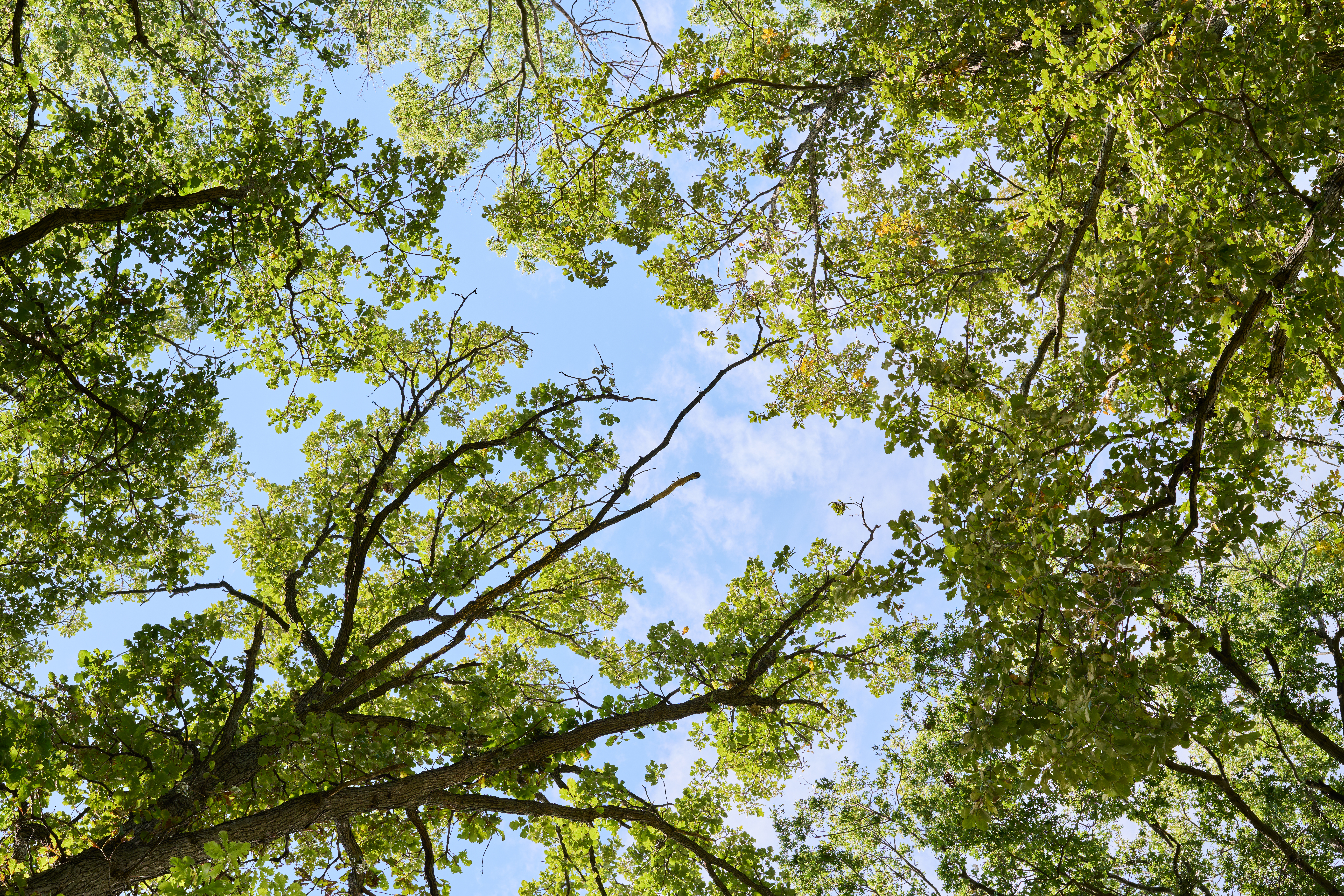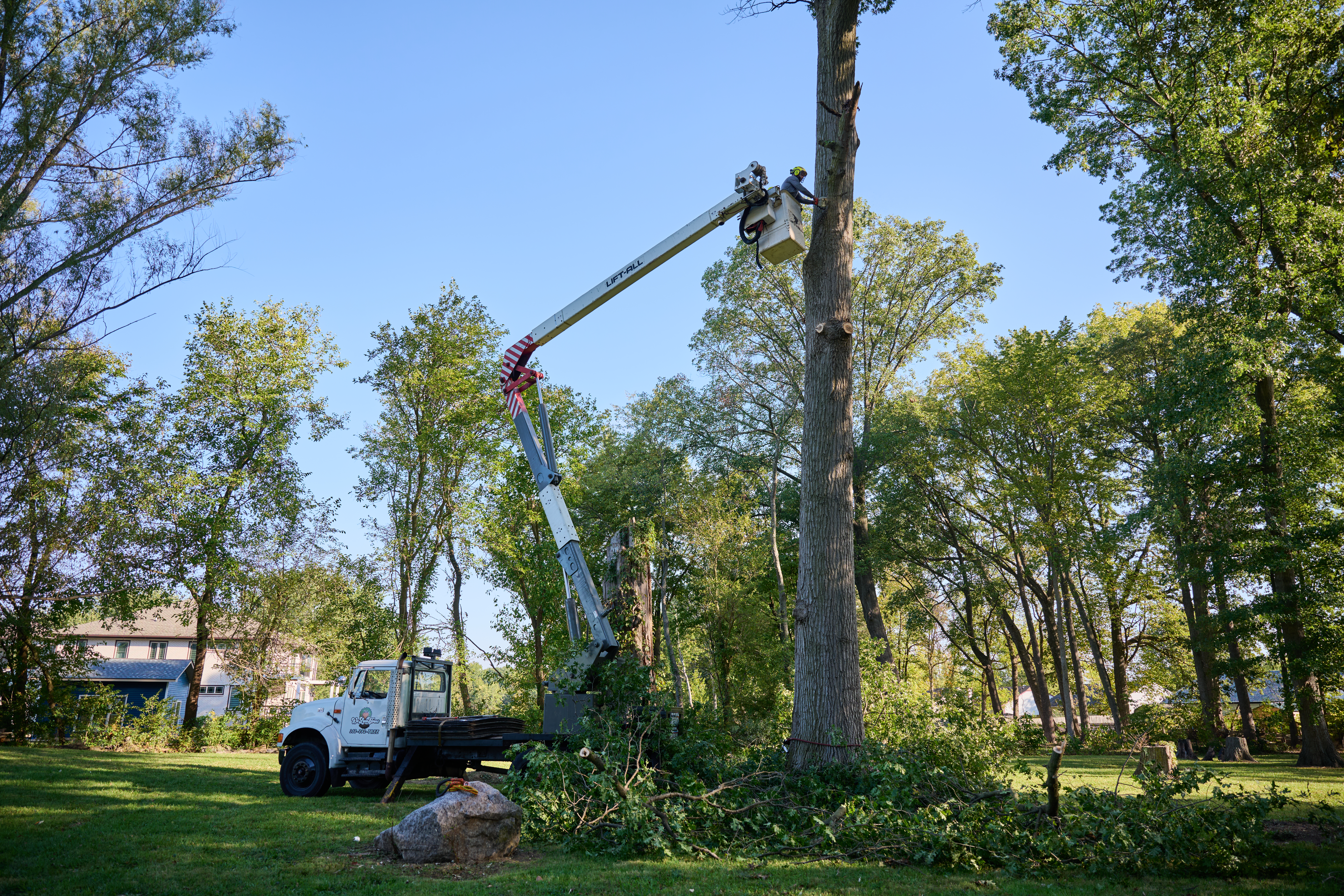
Find out how much it costs to plant a tree based on the number of trees, their size, where you want to plant them, and DIY versus professional costs.
This coverage protects homeowners, workers, and pedestrians


Tree service companies should have at least 2 types of insurance.
Look for general liability, professional liability, inland marine, and workers’ compensation insurance.
Ask to see a tree service’s certificates of insurance.
Whether you’re ready to stop spending the weekend trimming dead branches, there are many benefits to outsourcing regular tree service to a professional. When vetting different contractors, it’s important to ask about tree service insurance coverage. Learn the tree service insurance requirements to ensure you’re covered at all times.
Tree service insurance is essential coverage for businesses that provide tree-related services, from trimming and maintenance to full removal. This type of insurance covers providers in the event of bodily injury, property damages, or equipment damage. When shopping around for a local tree service to hire, it’s important to verify that their business holds tree service insurance to protect everyone involved with the transaction.


A pro can keep your yard looking picture-perfect year-round. But before that can happen, use these tips to find the best tree service company for your needs. Your tree service company should have both general liability and workers’ compensation insurance, but there are a couple of other options that would also be great for them to have.
Don’t assume that a tree service company that says they’re insured has the proper coverage. There are several different types of insurance that help cover a variety of potential situations. Having the right insurance policies in place helps mitigate the risks when hiring a contractor for any type of tree removal, trimming, or other maintenance.
Since some companies may not have any insurance, decide what your tree service insurance requirements are and then ask for proof that they carry them. Here’s a look at the various types of insurance for tree service contractors.
General liability coverage is a broad insurance that protects both the homeowner and the tree business in the instance of an accident or damages. If bodily injury or property damage occurs during the course of the work, a general liability policy will offer protection in the case of a lawsuit.
Professional liability insurance offers coverage in instances where a tree care professional provided false information or bad advice. This type of policy is also known as Errors & Omissions, and it’s recommended that tree service companies carry this type of policy to protect against any disputes over potential negligence.
Although the name sounds nautical, inland marine insurance refers to land-based equipment that tree companies use. This type of coverage protects the tools and supplies that may be transported from the business premises to a job site. This could include the theft, damage, or loss of chainsaws, ladders, stump grinders, tablets, and computers.
Work-related injuries are some of the most costly claims, so carrying comprehensive workers’ compensation coverage is essential for any tree service business. As a homeowner, you accept the potential liabilities for any accidents or damage that may occur on your property, and this coverage protects you as well. No matter how large or small the tree service is, every employee needs to be protected with adequate workers’ comp insurance.
Tree service is a job that comes with a good deal of risk for workers, who must maneuver around power lines, tackle fallen tree branches, and work with heavy equipment. That’s why it’s a good idea to leave these tasks to the professionals and hire outside contractors.
As such, you’ll need to consider what’s important when hiring a tree service, and take the time to do a little research. Contracting a company without tree service insurance can mean that any damage or accidents that occur on your property are your responsibility. This can also leave you vulnerable to lawsuits.
Some tree contractors may operate a business without any insurance at all, so it’s crucial you properly vet them before hiring. Look for a tree company or contractor with both general liability and workers’ compensation insurance, at minimum.
When you’re ready to hire a tree service professional, there are several best practices to follow to ensure you find the right pro for your task.
Any reputable business will have no problem sharing their certificates of insurance, so don’t be afraid to ask! Tree removal can be dangerous work, and double-checking for proper tree insurance coverage will help protect everyone. Before hiring a tree service professional, request copies of their policy documents and hold off on entering into a contract until you’ve had a chance to review them.
As with most large projects, it’s a good idea to bring a few different companies out to evaluate and provide quotes. Be sure to ask the representative what kind of training their tree crews have, and how they maintain a safe environment for both the workers and the property owners.
Once you’ve narrowed down your list of potential pros, complete some deep-dive research into your favorite option. Decide what your insurance requirements are for tree service companies and ask them to confirm they carry those types. Read reviews and check references when evaluating local tree service contractors to find exactly the right business for your needs.
From average costs to expert advice, get all the answers you need to get your job done.

Find out how much it costs to plant a tree based on the number of trees, their size, where you want to plant them, and DIY versus professional costs.

The cost of tree stump removal depends on size, removal method, location, and more. Our guide will show you how much stump removal costs.

The most significant factor in tree removal costs is the amount of debris. Read on to learn more about the average tree debris removal costs.

Can you cut down a tree on your property? There are laws about trees and chopping them down, so read this guide before you start a tree clearing project.

When trees suffer a lightning strike, what happens to it? Here’s what happens, the factors at play, and what you can do about lightning strikes.

Ready to learn how to cut down a tree in your yard? Follow this DIY guide to find out how to safely fell a tree with a chainsaw.